January 12, 2023
Oceana expeditions brave wind and waves to save important ocean habitats
BY: Oceana
Over the last two years, Oceana scientists have traveled to some of the farthest reaches of the globe to document underwater habitats and gather evidence to win their protection.
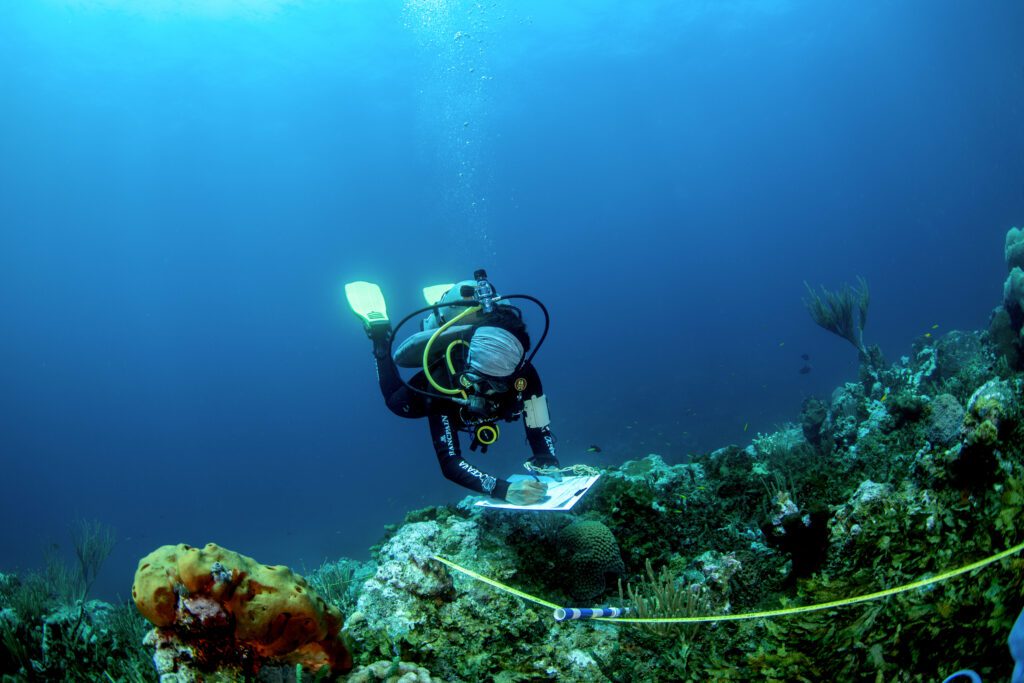
The powder-white beaches and azure waters of Scorpion (Alacranes) Reef might seem inviting, but this cluster of coral in the Gulf of Mexico is infamous for its “sting.” Beneath Alacranes’ balmy waves lies a cemetery of ships that fell prey to the reef’s lurking hazards. In 1524, shipwrecked sailors spent almost five months on one of the reef’s desert islands, drinking the blood of seabirds to survive.
During a 2021 expedition to this remote Mexican national park and nearby Bajos del Norte, Oceana scientists did not have to resort to such extremes, but the scorpion’s sting remained in full effect. Days of foul weather threatened a shipwreck of the team’s very own. Then an approaching hurricane sent the research vessel, the Caribbean Kraken, racing back to shore — driving a year-long wedge between the mission’s first and second halves.
This was not the only Oceana expedition that faced big risks and even bigger rewards as pandemic restrictions eased over the last two years. In a quest to document and protect the ocean’s at-risk nurseries and other key habitats, Oceana’s teams traveled to some of the most remote corners of the globe, from the rain-drenched fjords of Patagonia to the bone-chilling waters of Kodiak, Alaska. Oceana’s expeditions have helped protect nearly 4 million square miles (10 million square kilometers) of ocean habitat.
A fishy fiesta in Scorpion Reef
Alacranes Reef lies 90 miles (140 kilometers) north of the Yucatán Peninsula, a 10-hour boat ride from the coast. While a bane to sailors, the reef’s remoteness has been a boon to sea life. As corals wither elsewhere in the Gulf of Mexico and the Caribbean — victims of an overbuilt coastline and other threats — Alacranes has remained relatively untouched.
Its dive sites, with names like “the mushrooms” and “columns of the fine arts,” hint at the treasures below. Storms of rainbow-hued damselfish flit through underwater arches, while processions of sea turtles and nurse sharks glide between coral heads. “It was really amazing,” said Mariana Reyna, Ph.D., Oceana’s Oceans and Fisheries Scientist and expedition leader. She recalled a fellow crew member’s surprise at the teeming reef: “She said, ‘I was afraid to move; there was so much life there. I was afraid to crash into something’.”
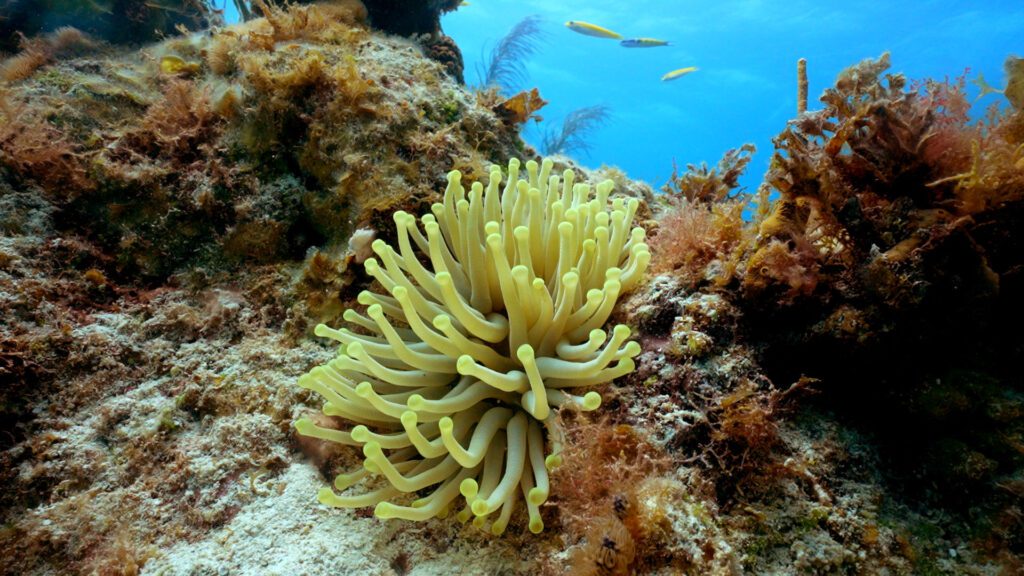
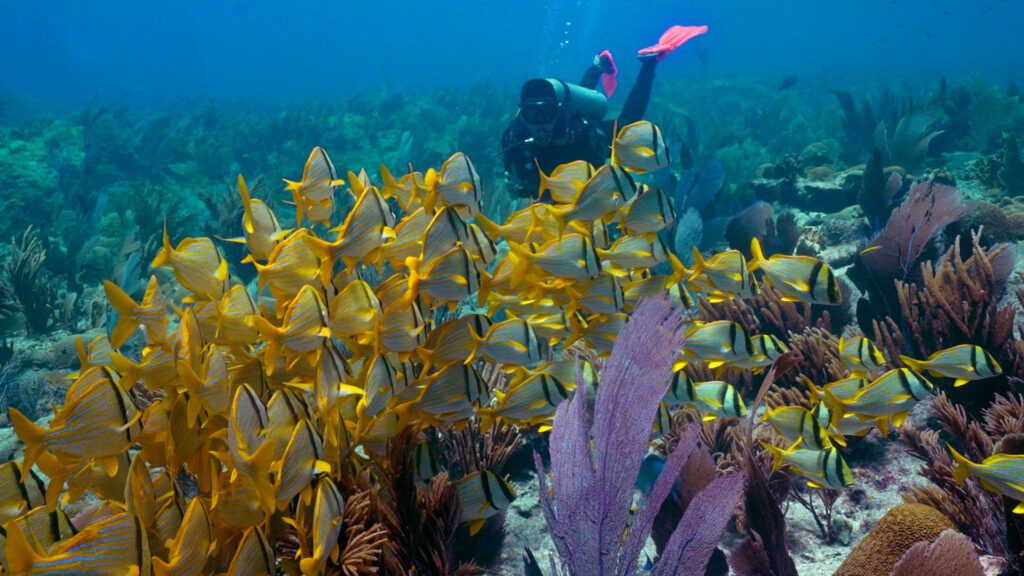
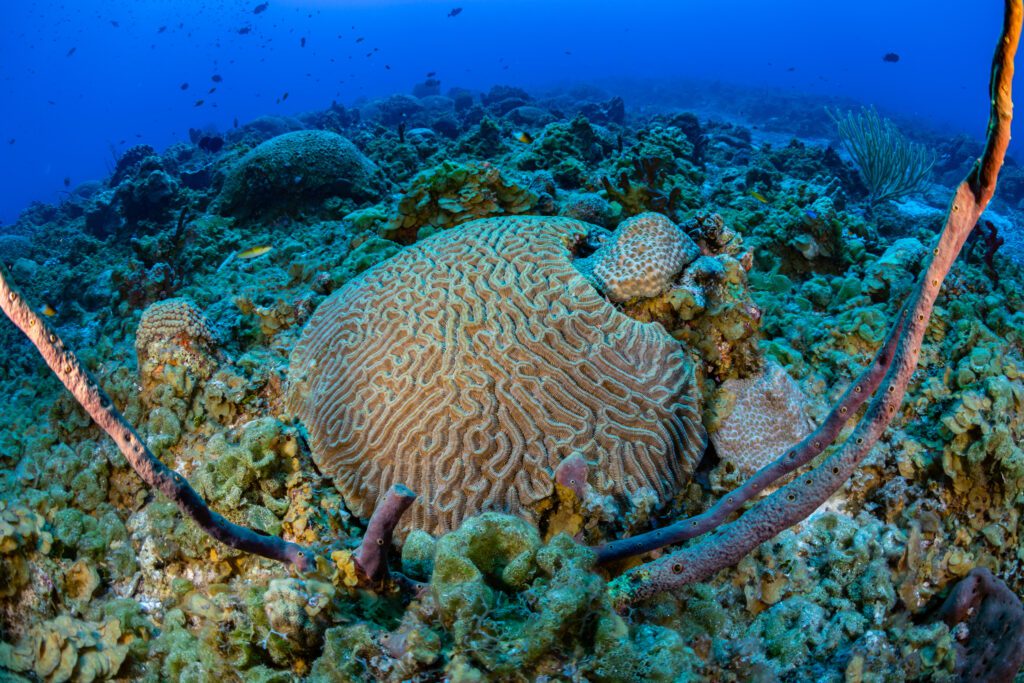
But the park’s secluded location has not insulated Alacranes Reef from every danger. Its old-growth colonies of elkhorn and staghorn coral were wiped out decades ago by disease, and as the Oceana team discovered, pathogens remain an ongoing threat. Invasive lionfish lurked “almost everywhere,” Reyna said, their insatiable appetites an existential threat to many species of native fish.
The team — which included scientists, 3D videographers, and a representative from expedition partner Blancpain — also spotted several boats illegally fishing, evidence of the lack of enforcement in the park. Oceana — thanks to support from Blancpain, Sobrato Philanthropies, and the Wyss Foundation — is campaigning to boost protections in Alacranes Reef and protect Bajos del Norte, a fishing ground that is part of the same reef system as Alacranes Reef. The goal is to either declare it a separate protected area, or to absorb it into the national park. Oceana is also calling on the Mexican government to increase patrols within Alacranes Reef, and to update the park’s outdated management plan, which does not account for a recent surge in tourism.
Bajos del Norte, which stunned expedition researchers with the profusion of its marine life, forms an important shelter for juvenile fish. Safeguarding this coral-encrusted nursery si vital not just to the Gulf’s biodiversity, but to the 4,000 local fishing families who rely on commercial species, such as snapper, grouper, and lobster. “If we lose these coral reef areas,” Reyna said, “we lose a way of life for many families in the Yucatán.”
In Patagonia, preserving nature and tradition
Over 5,000 miles (more than 8,000 kilometers) to the south, Oceana’s Chilean team was setting out on its own wave-tossed journey to help preserve local livelihoods. Katalalixar — a far-flung maze of islands and fjords to the west of the Patagonian ice fields — is the ancestral homeland of the Kawésqar people, an Indigenous group with roughly 600 remaining members.
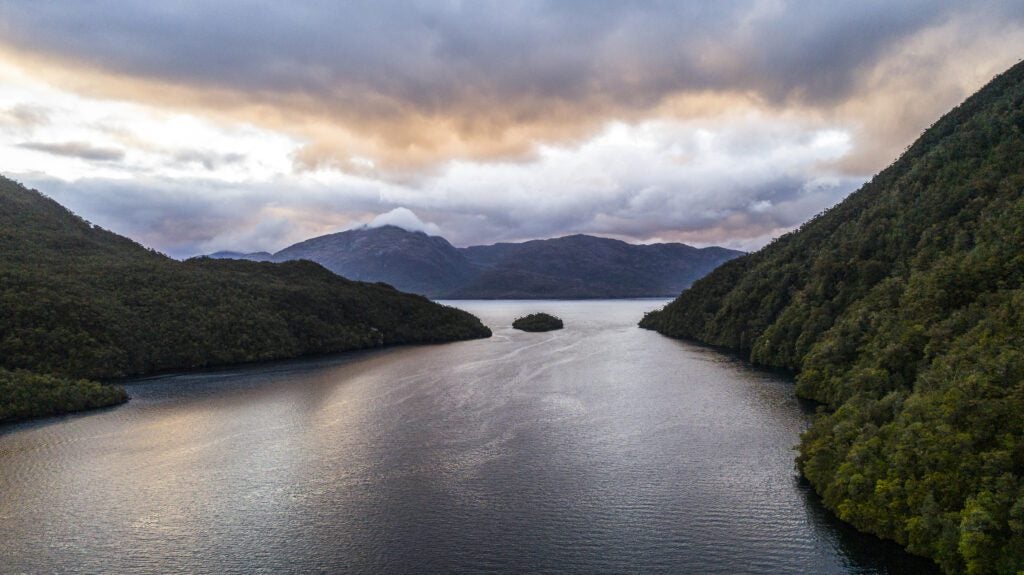
Beneath Katalalixar’s glacier-chilled surface lies anemones, sponges, and pastel-pink corals, swimming with fish and mammals, such as the rare Chilean dolphin. Despite its inaccessibility and punishing weather, this region is in danger — particularly from the country’s highly polluting salmon farming industry. In 2018, a years-long campaign by Oceana and local townspeople succeeded in blocking salmon pens from nearly 2,700 square miles (about 7,000 square kilometers) in Tortel, a next-door neighbor to Katalalixar.
As Oceana sought to fend off the salmon industry in other parts of Patagonia, Katalalixar — a key link between the laguna San Rafael and Bernardo O’Higgins national parks — became essential to protect. Chile’s national conservation agency, however, and other ideas. First it asked the team to find evidence of certain rare lichens in the area’s forests, which Oceana and a partner nonprofit supplied. Then it demanded proof of Indigenous people’s support, a far trickier ask.
In response, Oceana funded a story-gathering project with Kawésqar consultants to document and map out their traditional knowledge of the local land and sea. The work then inspired the organization’s first “cultural” expedition, which paired staff with a five-member Kawésqar family on a 15-day journey.
But Patagonia is hardly a placid place, and just getting everyone to Katalalixar was a hair-raising exercise. A storm grounded the family’s connecting ferry, along with the expedition’s entire food supply. Though the Kawésqar participants finally arrived on a last-minute flight, more trials were in store. In the middle of the crossing to Katalalixar, blue skies turned black, and 3-meter waves tossed the vessel around like a bathtub toy. Then, a few days later, the expedition’s food ran out.
There are, however, worse places in the world to live off the sea. The captain, a skilled fisherman, pulled up king crabs and buckets of mussels. “We ate like kings,” Liesbeth van der Meer, DVM, the leader of Oceana in Chile, laughed.

But another highlight outshone even the free seafood buffet: Kawésqar elder Francisco Arroyo’s intimate, almost uncanny, knowledge of the sea. “He would fall asleep, and all of a sudden, he would open his eyes and know exactly where we were,” van der Meer recalled. Arroyo knew precisely where to find conger eels, or shellfish, or even plastic pollution, leaving the crew in awe.
Footage from the expedition is now being turned into a documentary film, which will premiere in January 2023. The goals is to bring national attention to the Kawésqar and their home in Katalalixar, and to generate support for banning salmon farming in this area, which can have devastating impacts on the surrounding marine ecosystem. Van der Meer emphasized that the Kawésqar are the protagonists of this story, with Oceana playing a supporting role. “We’re always the scientists, teaching people about the ocean,” she said. “This time, they actually taught us everything.”
“Freezing the footprint” in the Gulf of Alaska
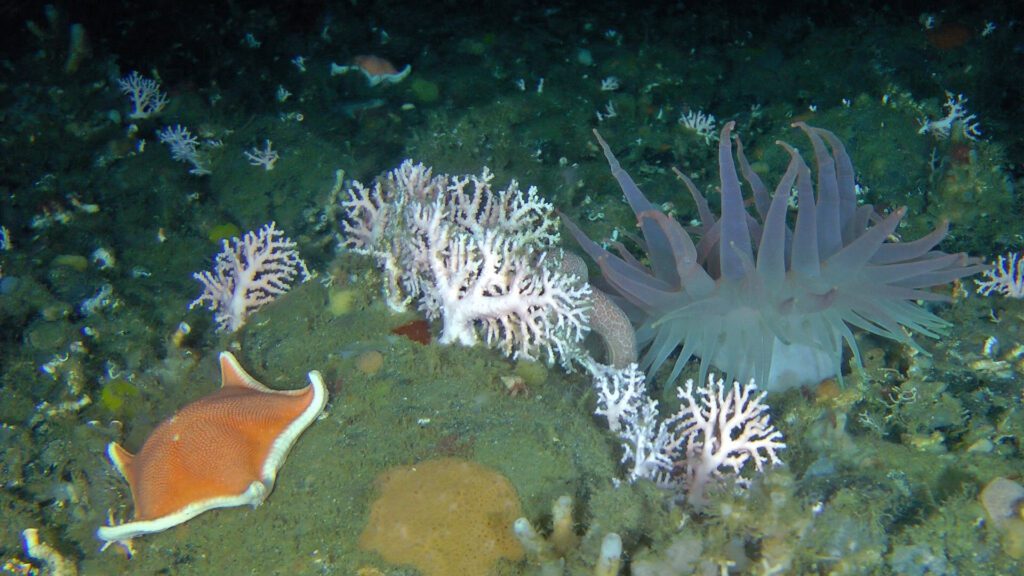
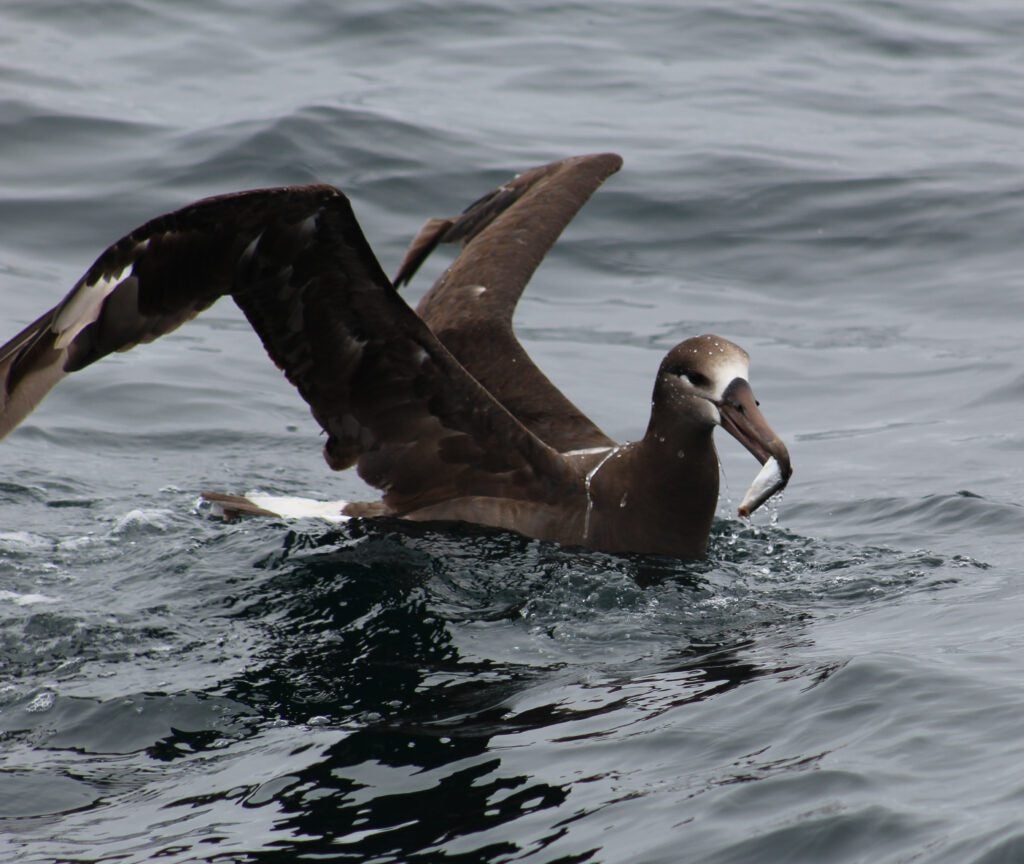
On the opposite side of the globe, Oceana’s Gulf of Alaska expedition, supported by the Becht Foundation and the Krupp Foundation, had plenty of commonalities with its Patagonian counterpart: frigid water, nasty weather, and special guest appearances from two Chilean team members, Oceana Science Director Matthias Gorny, Ph.D., and Oceana’s robotic submarine. While rough seas chased the team into sheltered bays and fjords on a few occasions, the team took it in strike. “You have to be really adaptable and have lots of different options for an expedition,” said Oceana Campaign Manager and Senior Scientist Jonathan Warrenchuk. “You have to have options b, c, and d.
All those different options made for a busy vessel. the remote-controlled submarine was finicky and repair-prone, while a loaded schedule meant team members often stayed awake until 2 a.m. and 3 a.m. to retrieve “drop cams” once they had bobbed to the surface. All that effort, though, paid off. Underwater footage revealed unexpected sights, from kelp forests and deep-sea hydrocorals to lingcod “stacked up like cordwood,” Warrenchuk recalled. Evening rewatches of the day’s films revealed “all sorts of little surprises,” from hidden octopuses to rockfish dozing in sponges.
All the while, a who’s who of Alaskan wildlife put on a spectacular show, with Kodiak brown bears patrolling the shoreline, and sea otters, fin whales, and raucous flocks of albatross roaming offshore. A curious young fur seal, who spent half an hour investigating the boat, was a particular delight for the crew.
Not all the surprises, however, were happy ones. In areas up to 3,300 feet deep, where bottom trawlers had plowed up the seafloor, it was far less biodiverse, with corals snapped off at the base, or missing entirely. The aftermath of these deadly scenes threatens the health and productivity of this unique marine ecosystem. The Gulf of Alaska is the last major region along the west coasts of the U.S. and Canada that remains open to bottom trawling. Oceana will now use the expedition’s discoveries to campaign for “freezing the footprint” of bottom trawling, preventing this destructive fishing method from expanding into so-far untouched zones.
Signs of life amid Spain’s trawl scars and plastic pollution
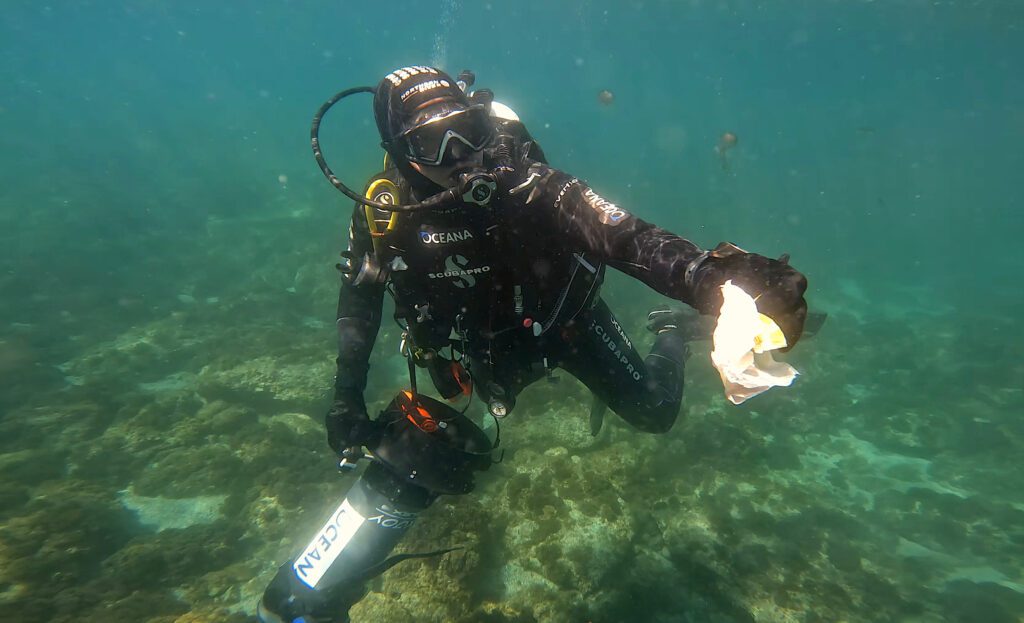
In the Alboran Sea, east of the Mediterranean’s Strait of Gibraltar, the fourth and final of Oceana’s 2022 expeditions revealed just how bad things can get when trawlers run rampant. “In some areas we found almost nothing living on the seabed” said Oceana Senior Advisor and expedition leader Ricardo Aguilar. Whether seagrass meadows, sandy beds of sea fans, or deep-sea reefs, “most of them have disappeared because of trawlers.”
The worst trawling marks uncovered by the expedition were within a string of marine protected areas along the Spanish coast. Given the fact that corals, sponges, and other reef-building species can take tens to hundreds of years to regrow, these findings were particularly worrisome. Even the area’s seagrass meadows, Aguilar explained, are less like lawns and more like old-growth forests, taking at least a century to fully recover after trawls have plowed them up.
Scars from fishing gear were not the only signs of harm. At several sites, the team recorded more wet wipes than fish — the stomach-turning evidence of untreated sewage dumping. Several marine canyons were found clogged with trash.
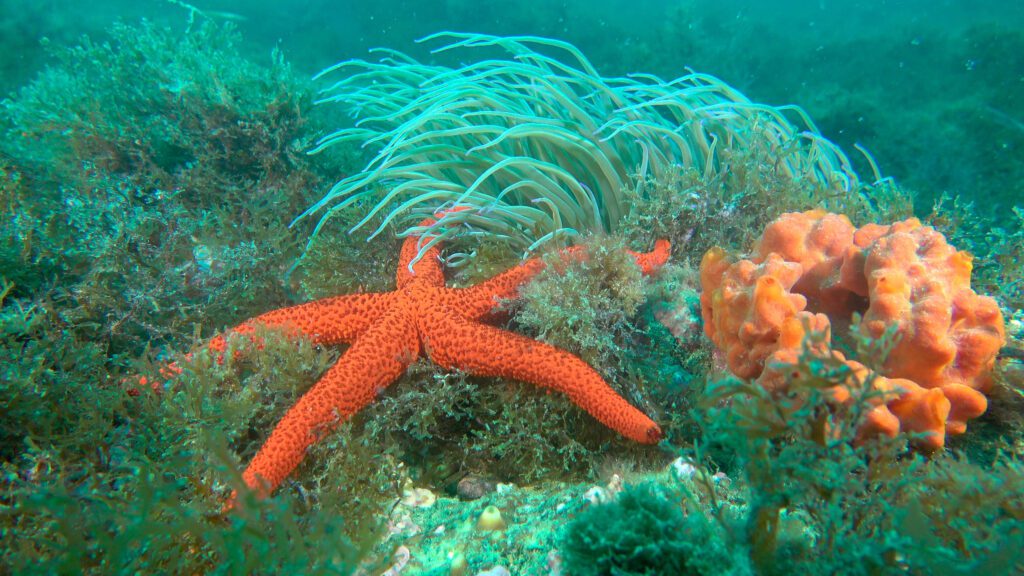
Still, there were signs of hope. Researchers were thrilled to discover a reef carpeted in soft corals and vivid sponges — most notably the common antlers sponge, which has disappeared across most of its range and is protected under a set of Mediterranean-specific conservation laws. With so little untrawled habitat left in the Alboran Sea, this reef represents a particularly important refuge for fish and other animals.
Oceana will use the evidence gathered from this expedition to campaign for the Spanish government and the European Union to end bottom trawling in all their marine protected areas. “They should not allow destructive fishing gear, destructive activities like oil exploration, and waste in these areas,” Aguilar said. “Some very good areas remain that are well-preserved but they are under threat because of bottom trawling.”
The Alboran Sea did have one thing in common with the other recent expeditions: bad weather. This stretch of ocean, normally mirror-flat and blazingly sunny, howled with high winds during the expedition, at times making it too dangerous to leave protected ports. Considering all the threats that the ocean faces, some foul moods are understandable. Regardless of any “sting” — scorpion or otherwise — Oceana will continue exploring the seas from pole to pole to secure victories that will restore the oceans.
This article originally appeared in the Winter 2022 issue of Oceana Magazine.



